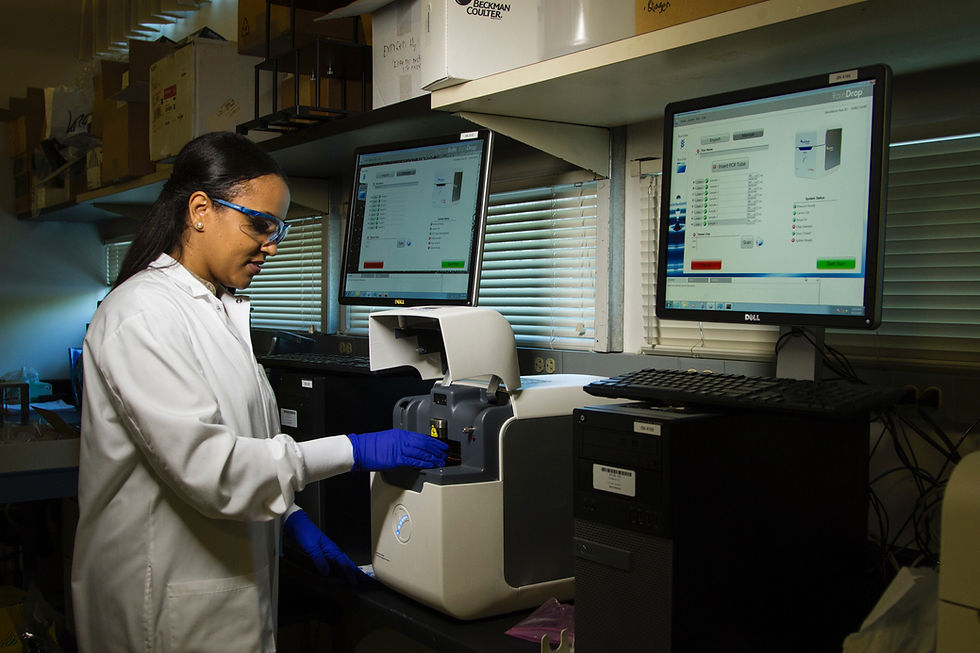DataOps: Revolutionizing Data Management and Analytics
- info058715
- Jan 9
- 5 min read
In the digital age, data is often referred to as the "new oil." However, just as crude oil requires refining to become useful, data must be processed, analyzed, and managed effectively to provide valuable insights. Enter DataOps—a methodology and set of practices designed to improve the quality, speed, and efficiency of data operations within an organization. By applying DevOps principles to data management, DataOps promises to enhance collaboration, streamline workflows, and enable faster, more accurate decision-making.
What is DataOps?
DataOps, short for Data Operations, is an agile methodology that applies the best practices from DevOps—such as automation, collaboration, and continuous integration—to data management. It seeks to address the inefficiencies and bottlenecks often encountered in traditional data pipelines by focusing on automating the flow of data, enhancing collaboration among teams, and improving data quality and governance.
Like DevOps, which integrates development and operations teams to accelerate software delivery, DataOps aims to integrate the different stages of data management—collection, storage, processing, and analysis—into a unified, continuous process. By doing so, DataOps helps organizations reduce data silos, improve the speed of data delivery, and ensure that data is always accurate, up-to-date, and accessible.
The Core Principles of DataOps
Collaboration: DataOps promotes strong collaboration across various teams within an organization, such as data engineers, data scientists, data analysts, and business users. Traditionally, these teams operated in silos, which often led to inefficiencies, miscommunications, and delays in data processing. By fostering collaboration, DataOps helps to break down these silos and ensure that everyone works toward the same goal—delivering high-quality, actionable data to stakeholders in real time.
Automation: Just as DevOps emphasizes automation to streamline software deployment, DataOps automates various stages of the data pipeline, including data ingestion, transformation, validation, and deployment. Automation ensures that data flows seamlessly from one stage to the next, reduces manual errors, and accelerates the overall process. Tools such as Apache Airflow, Jenkins, and Kubernetes can be used to automate tasks, making it easier to manage large volumes of data.
Continuous Integration and Continuous Delivery (CI/CD): DataOps embraces the concept of continuous integration (CI) and continuous delivery (CD) from the software world. In DataOps, this means continuously integrating data from various sources and making it available to stakeholders in real time. It also involves regular updates to data pipelines, ensuring that data is always fresh, accurate, and ready for analysis. CI/CD practices in DataOps help organizations rapidly deploy new data models, transformations, and pipelines without sacrificing data quality.
Data Quality and Governance: DataOps emphasizes the importance of maintaining high data quality while also ensuring compliance with data governance standards. This includes validating data before it is ingested into the system, monitoring data quality throughout the pipeline, and putting processes in place to address data issues as they arise. With automation tools, DataOps can continuously monitor data quality, quickly detect anomalies, and address problems before they impact downstream analytics.
Monitoring and Feedback: Just as DevOps relies on constant monitoring and feedback loops to improve software quality, DataOps incorporates the same approach for data operations. By continuously monitoring data pipelines, organizations can identify bottlenecks, track data lineage, and measure the performance of data models and systems. Real-time feedback helps teams quickly resolve issues, optimize processes, and make data-driven decisions with confidence.
Key Benefits of DataOps
Improved Speed and Agility: One of the main advantages of DataOps is the ability to accelerate data workflows. By automating the data pipeline and integrating processes through continuous delivery, organizations can reduce the time it takes to move from raw data to actionable insights. This is particularly crucial in environments where business needs evolve rapidly and decision-making must be agile.
Higher Data Quality: Inconsistent or inaccurate data can lead to poor decision-making, which can have serious consequences for businesses. DataOps helps improve data quality through automated validation, continuous testing, and monitoring, ensuring that data is always accurate, clean, and reliable. Moreover, DataOps integrates quality checks at every stage of the data pipeline, preventing issues from propagating downstream.
Better Collaboration: The collaboration between teams is at the heart of DataOps. Data engineers, data scientists, and business users work more closely together, ensuring that everyone is aligned on the goals, requirements, and progress of data projects. This reduces the chances of miscommunication and ensures that data initiatives are aligned with business objectives.
Scalability: As businesses generate more data, traditional data management approaches can struggle to keep up. DataOps, by automating processes and using modern cloud-based infrastructure, allows organizations to scale their data pipelines without compromising performance or quality. This makes it easier to handle large volumes of data while ensuring consistent delivery of insights.
Faster Time to Value: DataOps helps reduce the time it takes to extract actionable insights from data. By automating repetitive tasks and enabling continuous updates, organizations can quickly access and leverage data to make informed decisions. Faster time to value is especially critical in industries where competitive advantage relies on timely insights.
DataOps vs. Traditional Data Management
Traditional data management approaches often rely on manual processes, static data pipelines, and batch processing. These methods can be slow, inflexible, and prone to errors. DataOps, by contrast, emphasizes agility, automation, and real-time delivery. Below are some key differences between traditional data management and DataOps:
Feature | Traditional Data Management | DataOps |
Data Pipeline | Often manual and siloed | Automated, continuous, and integrated |
Collaboration | Limited, with siloed teams | Highly collaborative and cross-functional |
Speed | Slow and inflexible | Fast and agile |
Data Quality | Manual checks and audits | Automated validation and monitoring |
Deployment | Infrequent, error-prone | Continuous integration and delivery |
Scalability | Difficult to scale | Highly scalable, especially with cloud infrastructure |
Tools and Technologies Supporting DataOps
To implement DataOps successfully, organizations rely on a range of tools and technologies that help automate and streamline the data pipeline. Some of the key tools in the DataOps ecosystem include:
Apache Airflow: A popular open-source tool for automating and scheduling data workflows. It helps manage complex data pipelines and ensures tasks are executed in the correct order.
Apache Kafka: A distributed streaming platform that facilitates real-time data integration and processing. Kafka is commonly used for data ingestion and real-time analytics.
dbt (Data Build Tool): A tool for transforming raw data into clean, analytics-ready datasets. It allows data teams to build, test, and document their data models efficiently.
Kubernetes: An open-source platform for automating the deployment, scaling, and management of containerized applications. Kubernetes is often used to scale data operations in cloud environments.
Jenkins: A widely-used automation server that helps with continuous integration and continuous delivery of data pipelines.
Challenges of Implementing DataOps
While DataOps offers numerous benefits, implementing it can be challenging. Some of the key hurdles include:
Cultural Resistance: Shifting from traditional data management approaches to a DataOps culture requires buy-in from all stakeholders. Overcoming resistance to change and aligning teams with DataOps principles can be difficult.
Complexity of Data Pipelines: Designing and managing data pipelines at scale can be complex, especially for organizations with vast amounts of diverse data. Ensuring that automation works seamlessly across different stages of the pipeline requires careful planning and integration of various tools.
Data Security and Governance: While DataOps emphasizes agility, organizations must ensure that automation and speed do not compromise data security and governance standards. Establishing proper protocols for data access, compliance, and privacy is essential.
Conclusion
DataOps represents a transformative shift in how organizations manage and leverage data. By adopting the principles of automation, collaboration, and continuous integration, businesses can improve the quality, speed, and scalability of their data pipelines. While challenges exist, the benefits of faster decision-making, better data quality, and enhanced collaboration make DataOps an invaluable strategy for modern data-driven organizations. As the demand for real-time insights continues to grow, DataOps is poised to play a critical role in helping companies navigate the complexities of data management and unlock the full potential of their data.





Comentários